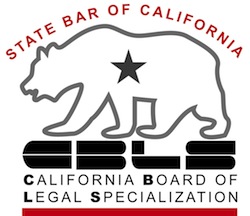What can you do when it becomes obvious that your business should close?
The hardest part of being in business is recognizing when the business has no future and needs to close. Yet the overwhelming majority of new businesses fail within 5 years.
So you’re not alone. In fact, in the face of the pandemic, you’re in great company.
Shutting down an insolvent business presents a tough challenge: honoring the legal rights of creditors while minimizing the damage to the founders and employees.
Not to mention the emotional hit.
Separating the owner from the business
Unless you are a sole proprietor, you and your business are two separate legal entities.
Whether your business operates as a corporation or an LLC, it has its own rights and obligations. Those rights and obligations may be different from yours as the shareholder.
For the purposes of this discussion, we’re going to assume the business is a corporation. If you operated as an LLC, the issues are essentially the same as those of a corporation.
- The board of directors of an insolvent corporation owes its duty of loyalty to the creditors, not the owners.
- Creditor claims get paid before the shareholder’s ownership claims.
- Shareholders can be creditors as well as owners.
- Management can legally pay some creditors and not others.
Keep these precepts in mind once you see the business needs to close.
Bankruptcy or not
There is no clear or universal answer to whether a failed business should file a Chapter 7.
A corporation does not get a discharge in a Chapter 7 case; only a Chapter 11 reorganization erases the debts of a corporation. And a Chapter 11 is worth the significant time and expense only if the business has a future, or some valuable asset salable only if the business continues until the sale.
So the only purpose a business bankruptcy serves is to liquidate the business assets and satisfy creditors as far as possible. The unpaid debts will remain enforceable against the corporation for as long as the law allows.
Companies can go out of business without filing bankruptcy: they liquidate their assets and cease operations. Creditors have a right to recover their claims from the assets of the corporation.
If there are no assets, the corporation cannot be further harmed by lawsuits that try to collect from the corporation: a judgment against a company without assets is worthless.
Closing without bankruptcy
It’s perfectly legal and rational to simply close the doors and cease business without involving the courts.
The danger to management in this approach is the tendency of some creditors to assume that the business’s failure to pay means that there is some sort of skullduggery afoot. Those creditors don’t recognize the legal distinction between the corporation that runs the business and the people who work for and own the corporation.
It becomes easy and reflexive for such creditors to sue the officers as well as the corporation to collect the debt. The corporation may have no remaining assets but the officers have both assets and future earnings at stake.
While the claim against the individuals may be invalid, the individual has to appear and defend in the lawsuit, or a judgment will be entered against him.
And sometimes, the individuals are liable because the individual guaranteed the debt or even the individual opened the account before the corporation was formed.
Why doing it yourself can work
Personally managing the wind up has advantages, if you are willing to devote the time and energy to the process.
Management can usually get a better price for assets since they know the market, know the asset, and are motivated to get highest recovery.
Outside of bankruptcy, you control who gets paid with the available funds.
You can act swiftly to limit exposure of management or investors by paying first debts guaranteed by insiders, subletting leased space, returning leased equipment, etc.
Creditors are protected from having to give back preferential payments to the bankruptcy trustee.
Assets can be sold to insiders so long as the price is fair.
All desireable outcomes, if it’s possible.
DIY isn’t all roses
But…
Handling the shut down yourself has some down side. DIY may
- Prevent management from accepting new employment
- Require cooperation from creditors and lessors
- Increase likelihood that disgruntled creditor will sue individuals too
Bankruptcy is simple
In Chapter 7, the bankruptcy trustee becomes responsible for liquidating assets, returning equipment, and dealing with creditors, freeing management to turn to other endeavors
The trustee has powers under Bankruptcy Code to sell leases despite anti assignment provisions and to avoid levies and writs of attachment, recovering value for creditors that isn’t possible outside of bankruptcy.
Filing bankruptcy seems to reduce the instance of creditors suing individual managers for corporate debt.
The automatic stay prevents aggressive creditors from diverting cash that could be used to pay taxes, employees, and guaranteed debts or recovering property needed for wind up.
But….
If the bankruptcy trustee winds up the business:
- Trustee unlikely to get top dollar for saleable assets.
- Insiders may be prohibited from buying technology, intellectual property or projects in development
- Trustee’s fees and expenses are paid off the top
- Trustee can recover preferences to trade creditors and to insiders and challenge pre petition transfers of assets if legally fraudulent
- Bankruptcy process frequently slow and inexact
- Claims are paid according to priorities in the Bankruptcy Code
Try some of each
The choice of how to wind up doesn’t have to be an either/or decision.
Management can liquidate assets as far as feasible, and file bankruptcy thereafter to let the trustee mop up.
Step back and look at the issues of timing, asset value, and creditor claims.
If the answers seem complex, consult a bankruptcy lawyer for help weighing the alternatives.
More
Separating the business from the business owner
Limiting exposure to unpaid CA sales taxes
Myth of the corporate business card






